Struggling to brew the perfect espresso? Let's fix that.
Welcome to the ultimate resource for anyone who loves coffee and wants to become an expert at making one at home.

We'll cover everything from the fundamental components of an espresso machine to the sophisticated tips that will completely change your morning routine. Whether you're a novice or a seasoned barista, this informative guide will reveal the secrets to making great espresso.
What is an Espresso Machine?
Espresso machines is a specialized coffee maker designed to brew a concentrated form of coffee known as espresso. They work their magic by using pressurized water to extract the rich flavors from finely ground coffee, producing a velvety and concentrated espresso in under a minute.
The essence of an espresso machine lies in its ability to generate the necessary pressure to force hot water through the coffee grounds. This pressure is measured in bars, and a typical espresso machine operates at around 9 bars of pressure, though some high-end models can reach up to 15 bars.
The high pressure and short extraction time are what create the espresso's distinctive rich flavor and creamy crema—a golden layer of foam that sits atop the espresso shot.
Espresso Machines - The Essential Parts
Most commercial espresso machines have similar components and operate in much the same way. However, there are differences in the features and overall quality of parts among the various machines.
Key components of a machine include a water tank, a boiler or thermoblock, a portafilter, a pump, and a steam wand. You may also come across terms like group head, gasket, BAR pressure, and extraction time. Here are some essential facts to guide you through espresso terminology.
Water tank
The water tank is designed to store the water used in the brewing process. Typically located at the back or sides of the machine, the tank's capacity can vary from model to model. Some machines feature removable water tanks for easy refilling and cleaning, while others have built-in tanks that need to be filled in place.
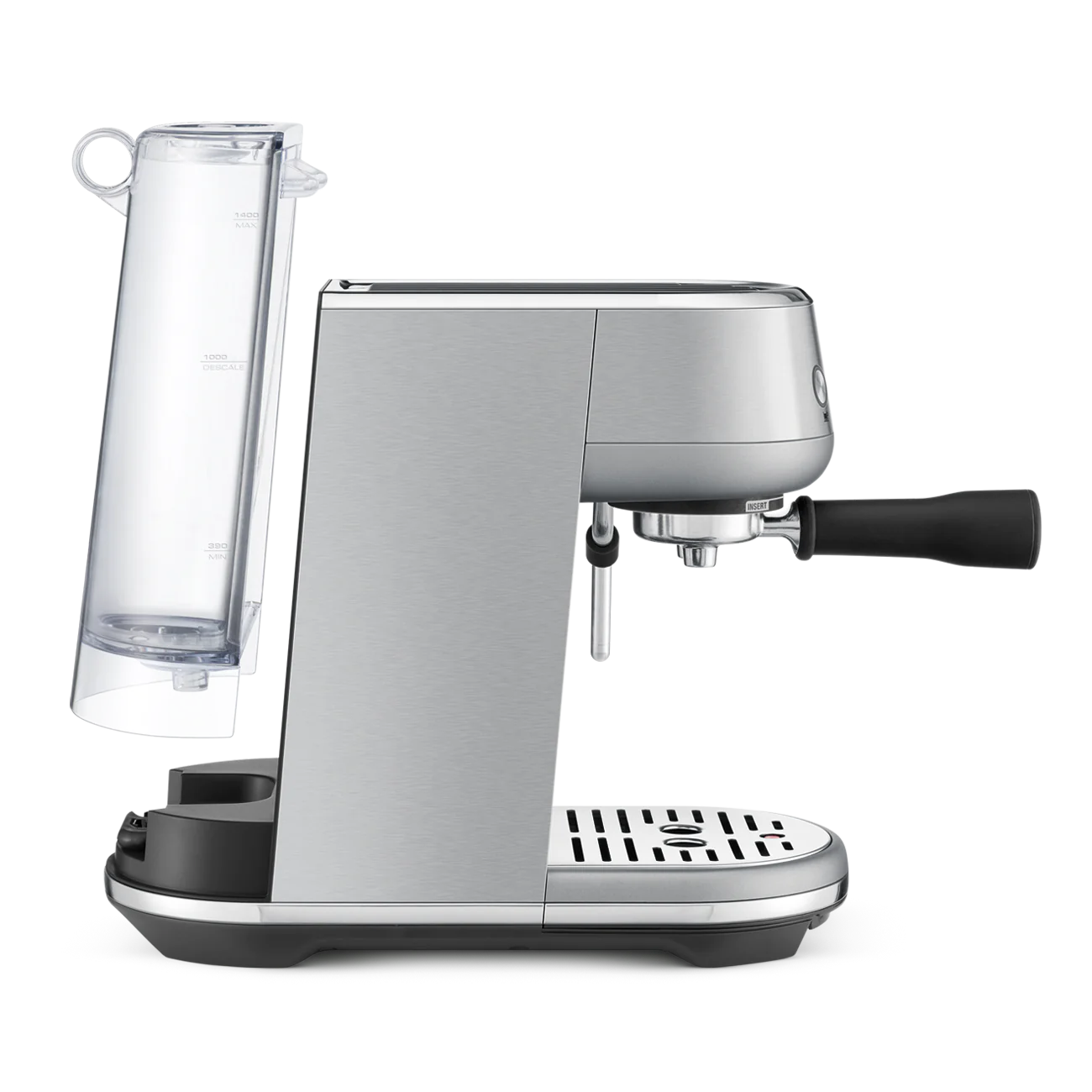
Boiler
The boileris responsible for heating and storing the water at the right temperature for making espresso. Certain machines use a thermoblock (a small heat exchanger that effectively warms the water from the tank to the pump) instead of a boiler.
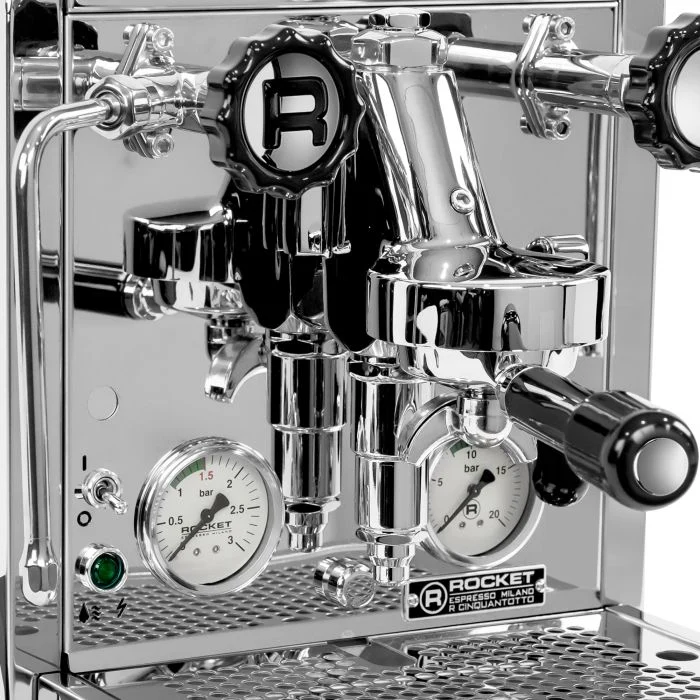
There are two main types of heating systems used in espresso machines:
-
Single Boiler: Machines with a single boiler use the same boiler for both brewing espresso and steaming milk. This can result in a waiting period between brewing and steaming, as the boiler needs to adjust to different temperatures.
-
Double Boiler: Machines with double boilers have separate boilers for brewing and steaming, allowing for simultaneous brewing and milk frothing. This setup provides greater temperature stability and efficiency.
-
Thermoblock: Some machines use a thermoblock instead of a traditional boiler. A thermoblock heats water on demand as it passes through a heated block, providing faster heat-up times but potentially less temperature stability.
Portafilter
The portafilter is an essential piece. It holds the ground coffee and ensures the water is properly conducted to brew the perfect cup of Joe.
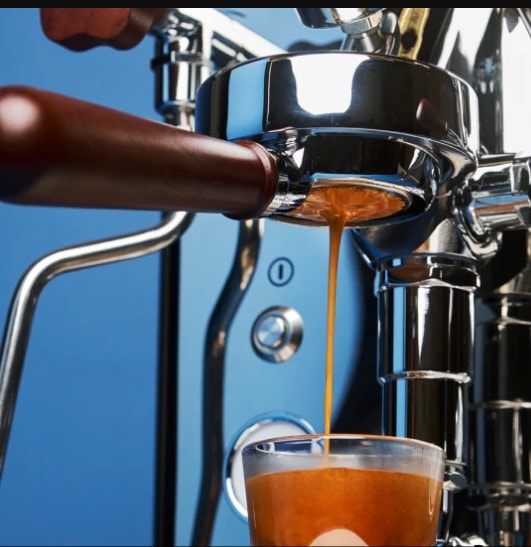
Portafilters come in different sizes and designs, including:
-
Single Spout: Ideal for brewing a single shot of espresso.
-
Double Spout: Allows for brewing two shots of espresso simultaneously.
-
Bottomless: Provides visual feedback on the extraction process, helping to identify issues with tamping and grind size.
Pump
The pump is crucial for generating the pressure needed to brew espresso. It draws water from the tank and forces it through the coffee grounds at high pressure. There are two main types of pumps used in espresso machines:
-
Vibratory Pump: Common in home espresso machines, vibratory pumps are compact and cost-effective, though they can be noisy.
-
Rotary Pump: Found in commercial and high-end home machines, rotary pumps are quieter and more durable, offering consistent pressure for optimal extraction.
Steam wand/milk frother
Most coffee makers, whether steam boiler or pump-enabled, have a steam wand with a detachable metal tip to expertly foam milk for cappuccinos, lattes, and delicious coffee drinks such as Americanos and Macchiatos.
The steam wand is connected to the boiler through a flexible pipe. You can control the mechanical valve by manually turning a knob on the side of the steam wand in the machine.
High-quality steam wands provide a powerful and steady stream of steam, enabling you to create smooth, velvety microfoam.
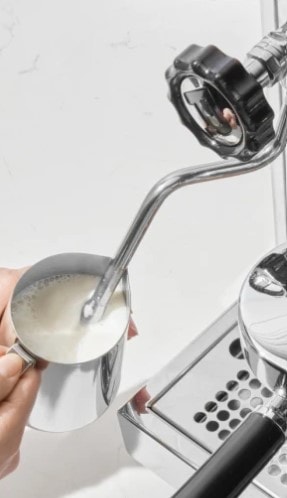
Group Head
The group head is the part of the machine where the portafilter locks in and the pressurized water is distributed over the coffee grounds. It plays a crucial role in ensuring even extraction and is often designed with precision to maintain consistent water temperature and pressure. The group head typically includes a gasket and screen to seal the portafilter and evenly disperse the water.
Espresso Machine Technology
Espresso makers have undergone significant advancements in recent decades and usually come with an easy-to-use touchscreen enabling you to brew a double shot or a single one.
At their core, these machines operate by forcing pressurized water through finely-ground coffee, extracting rich flavors and producing a concentrated espresso shot in under a minute. The water is heated to the optimal brewing temperature, typically between 195-205°F (90-96°C), ensuring the perfect balance of flavor and aroma.
Many machines now feature programmable settings, allowing users to customize parameters such as water temperature, shot volume, and extraction time.
These programmable features ensure that each cup is brewed to exact specifications, catering to individual preferences and ensuring a consistent, high-quality espresso experience.
Types of Espresso Machines
It's awesome that we have the convenience of enjoying specialty coffee at work and in the comfort of our homes. However, understanding the three main types of home and commercial espresso machines and their unique purposes is crucial in determining the most suitable option for you:
Manual Espresso Machine
Manual machines include those with a spring piston or direct lever action. Pressurized water is added to the tank manually or, in the case of semi-automatic piston machines, with the help of an automatic pump.
A lever machine is the most common where you grind and tamp like a semi-automatic machine. However, instead of relying on automation, you manually pull a lever to apply the desired amount of pressure and to ensure a smooth water flow through the coffee.
If you appreciate the traditional approach, you might enjoy using a lever espresso. They are affordable, compact, and portable, making them convenient for making a great cup at the office or while traveling.
Recommended:ROK Coffee Portable Espresso Maker - Durable Glass Composite Construction
The ROK Coffee Portable Espresso Maker crafts espresso with precision and care, whether at home, at work, or in the kitchen. With their sleek design, Lever arms deliver full power, ensuring long-lasting performance.
Semi-Automatic Espresso Machine
A semi-automatic espresso machine handles certain tasks. However, you will still be required to take charge of the finer details of grinding and tamping. Some semi-automatic espresso machines also have integral grinders but, unlike a super-automatic espresso machine, users need to fill the portafilter basket with ground coffee beans.
After grinding and tamping your coffee using a semi-automatic machine, securely attach the portafilter and press the brew button. Certain machines, like the Lelit Kate, have a built-in grinder with a micrometric adjustment to achieve the perfect grind size for every type of coffee. Ready to brew in 10 minutes and steam in just 1, they are truly brew-tiful machines!
Recommended:Lelit Kate Espresso Machine
This machine is especially suited for those seeking a hands-on approach to crafting beverages tailored to their tastes. Sharpen your espresso-making skills easily using Lelit Kate's mug-friendly feature - brew right into your favorite cup.
Super-Automatic Espresso Machine
A super-automatic machine is like having your barista at home with you. With the push of a button, this machine takes care of everything, from grinding the beans to brewing at the correct temperature with just the right amount of pressure.
If you're not keen on mastering the art of making the best espresso from scratch, investing in a quality automatic machine can bring you one step closer to enjoying an exceptional espresso.
These machines are ideal for those who value convenience and easy cleanup. They stay neat and contained inside the machine to avoid mess from leftover coffee grounds or spills.
Recommended:Breville Barista Touch Espresso Machine
The Breville Barista Touch, allows you to adjust settings using the touchscreen. It combines practicality and ease of use seamlessly. Its sophisticated functions, like milk frothing, let you create coffee shop-style drinks whenever you're in the mood.
The Right Grinder - A Game-Changer in Home Brewing
Several factors could be affecting the taste of your espresso. You may not own a high-quality grinder like the Breville Barista Express with 25 grind settings. With a simple twist and a press, you can grind, tamp, dose, and steam and produce a cup of exceptional coffee.
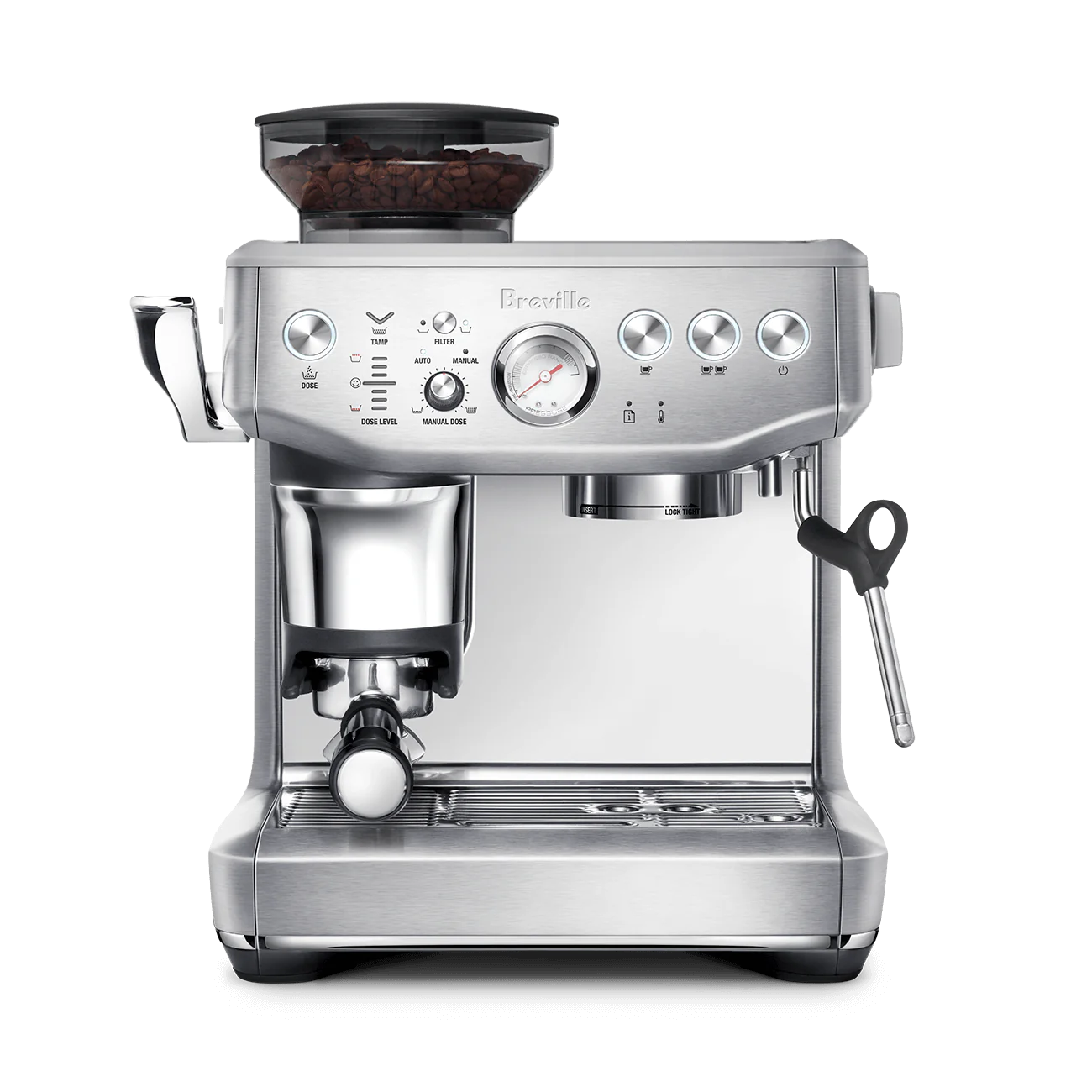
On the other hand, if you have a standalone maker, you'll need a high-quality grinder to complement it such as the Breville Smart Grinder Pro Coffee Grinder. With 60 grind settings available, you can be confident that every cup you create in your own kitchen is brewed to perfection.
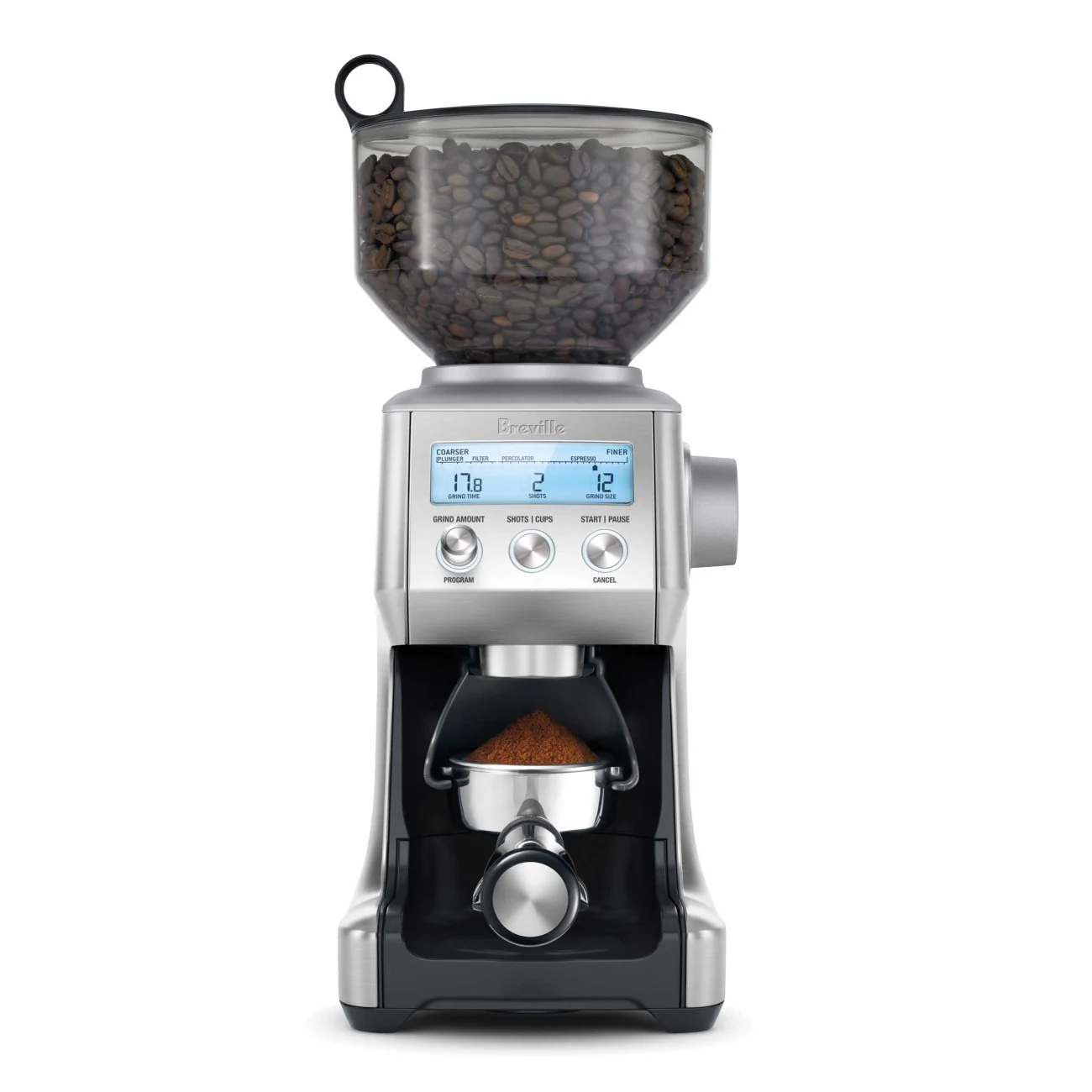
Makes sense? Let's move on to espresso machines and what goes into making espresso.
Must-Have Tools and Accessories for Brewing Espresso
Creating the perfect espresso goes beyond simply pressing a button. Creating that delicate double shot also requires careful bean selection, quality water, proper equipment usage, and precise grind size adjustment.
Additionally, you can enhance your brewing process with high-quality accessories specifically crafted to elevate every aspect of your coffee enjoyment. With a focus on precision dosing and optimal water filtration, these three essential Breville accessories are carefully selected to elevate, streamline, and perfect your coffee-making process:
Breville ClaroSwiss Water Filter
The Breville ClaroSwiss Water Filter, equipped with cutting-edge Advanced ClaroSwiss water filtration technology, guarantees purified water, free from chlorine, sediment, and heavy metals.
This innovative filter ensures the purification of every drop of water, minimizes your contact with harmful impurities, enhances the taste of your drink, and simplifies maintenance tasks.
Breville the Knock Box
Say goodbye to messy countertops and difficult clean-ups as the Knock Box effortlessly gathers your coffee and espresso grounds with a gentle knock, guaranteeing a smooth and tidy espresso-making experience every time.
What Coffee Do You Use in an Espresso Machine?
You can use any coffee if it is finely ground. However, it's important to consider certain factors when making coffee, like brewing time, temperature, and the ratio of coffee to water as they can significantly impact the flavor of coffee drink in your espresso.
When selecting coffee beans for your espresso machine, consider the origin and quality of the beans. High-quality beans from reputable sources often yield better-tasting espresso.
For instance, Brazilian beans are favored for their bold, nutty flavors, while Colombian beans are known for their balanced acidity and notes of red fruit, toffee, and cocoa. Trying different single-origin beans or blends can help you discover unique flavor profiles and enhance your espresso experience.

The Espresso Brewing Process
Now, let’s deep dive into how to use an espresso machine, from grinding the coffee beans to frothing the milk so you can enjoy a cup of espresso with every brew.
Grind your beans to a fine consistency, like powdered sugar. Consistency in grind volume is crucial for achieving a balanced extraction and maximizing the flavor of the coffee grounds.
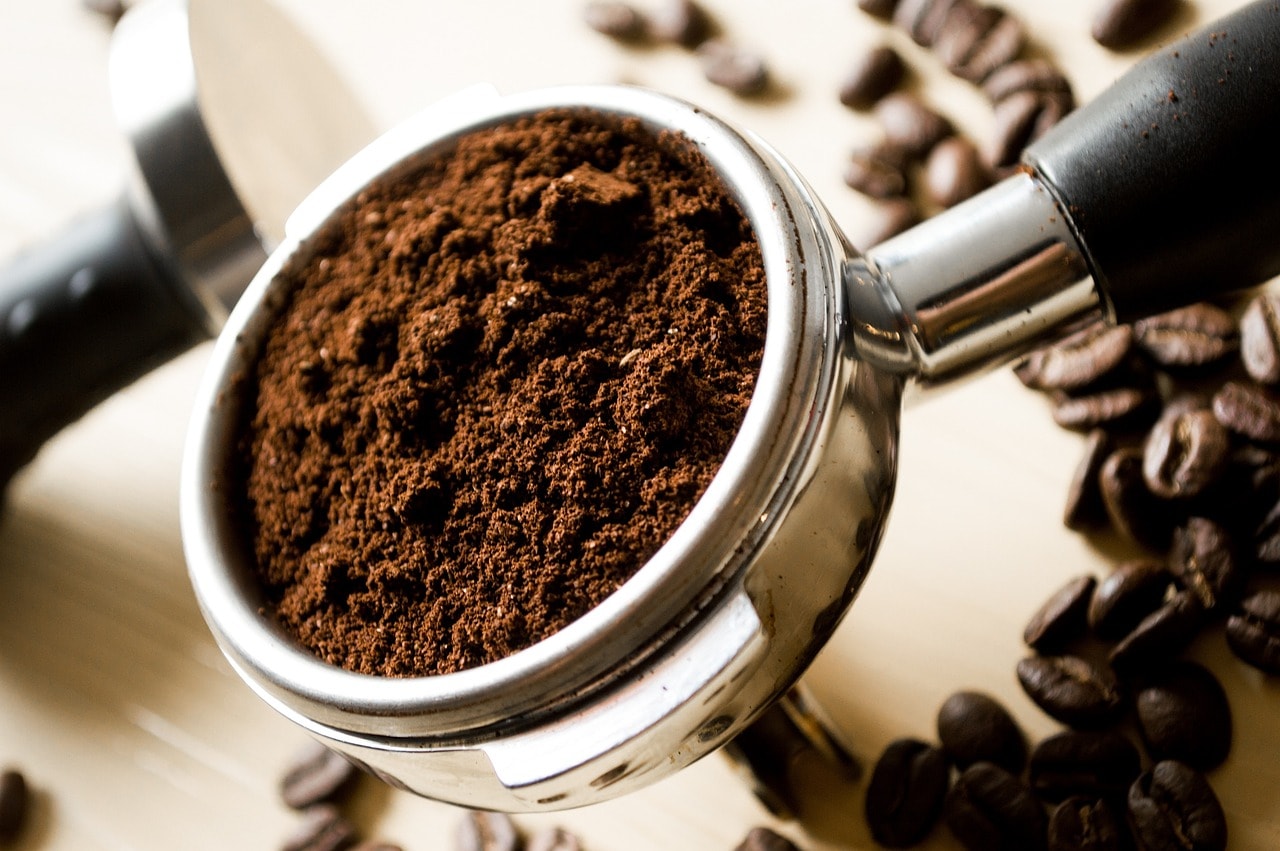
To achieve an amazing espresso, evenly distribute filtered water over the espresso grounds in the basket. Apply firm, even pressure to compress the coffee grounds in the filter basket, controlling the water flow and extraction rate.
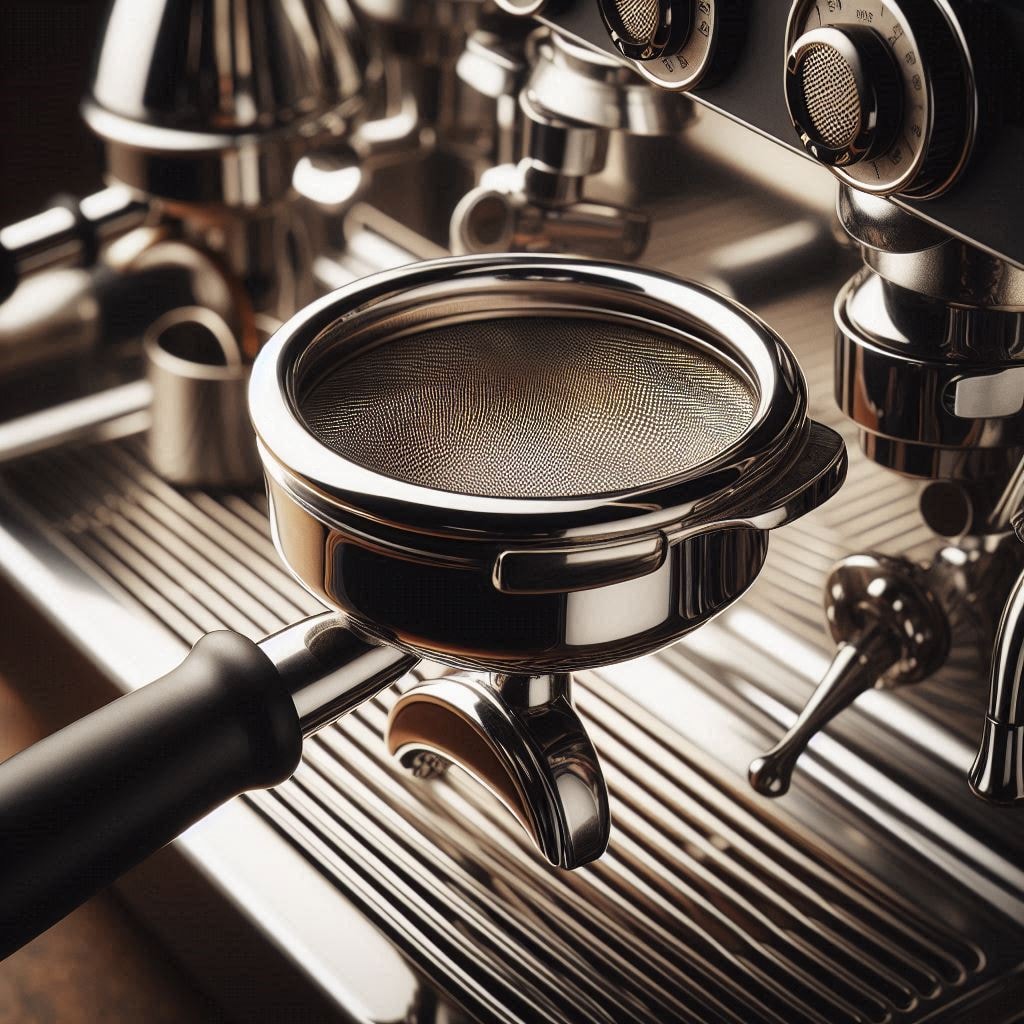
Choose your filter basket according to shot size and the amount of espresso you're making, ensuring the filter baskets are properly inserted into the portafilter before positioning it. The exact measurement varies with the espresso machine design and filter basket size.
3. Securing the Portafilter
Attach the portafilter to the group head, ensuring the hot waterspout tank has a tight seal to prevent the hot water spigot from leaking during brewing.
Place the portafilter on a flat surface. Shake or tap the portafilter to ensure the coffee is level and distributed evenly. Press hard enough to compact your coffee into a decent puck and squash out any air bubbles.
4. Dispensing the Water
When the brewing begins, the portafilter dispenses hot water through the group head. This hot water should flow evenly through the espresso grounds, producing a rich, flavorful double-shot amount of espresso.
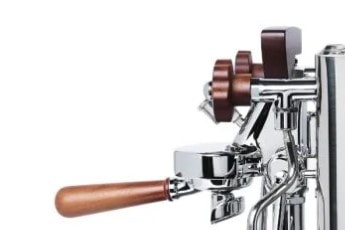
5. Pouring the Espresso and Frothed Milk
Mix the brewed espresso with the steamed milk using a spoon to prevent it from spilling as you pour. Stir the drink slowly to blend the steamed milk and espresso. Then savor your flavorsome coffee drink again.
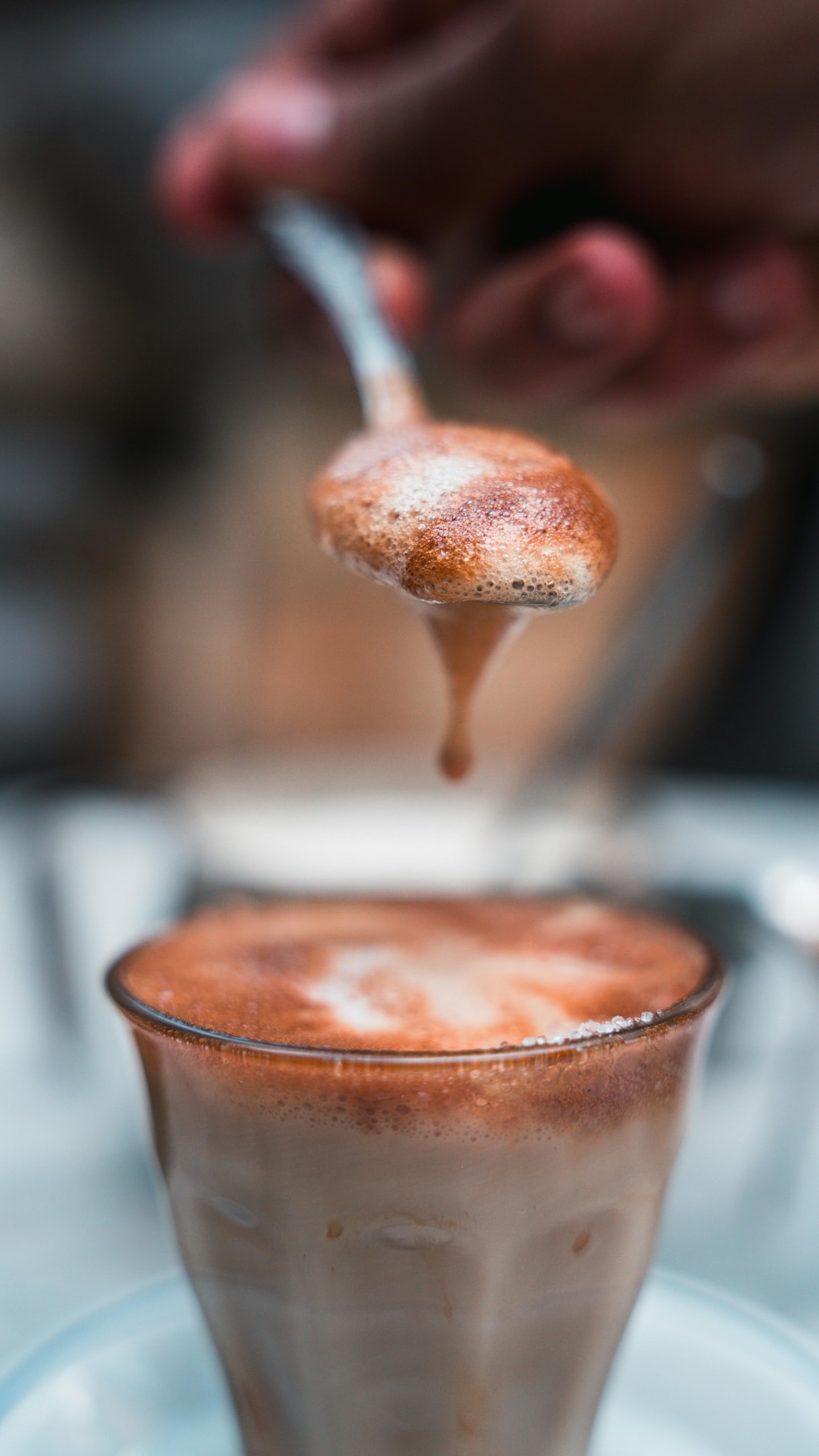
How to Steam Milk with an Espresso Machine
Pour cold milk into a pitcher, position the steam wand just beneath the milk’s surface, and activate the steam. Tilt the pitcher slightly to create a swirling motion that combines air and warmth for a texture. Stop frothing when the milk reaches 150 155°F (65 68°C). Perfect the coffee flavor by adding frothiness on top.
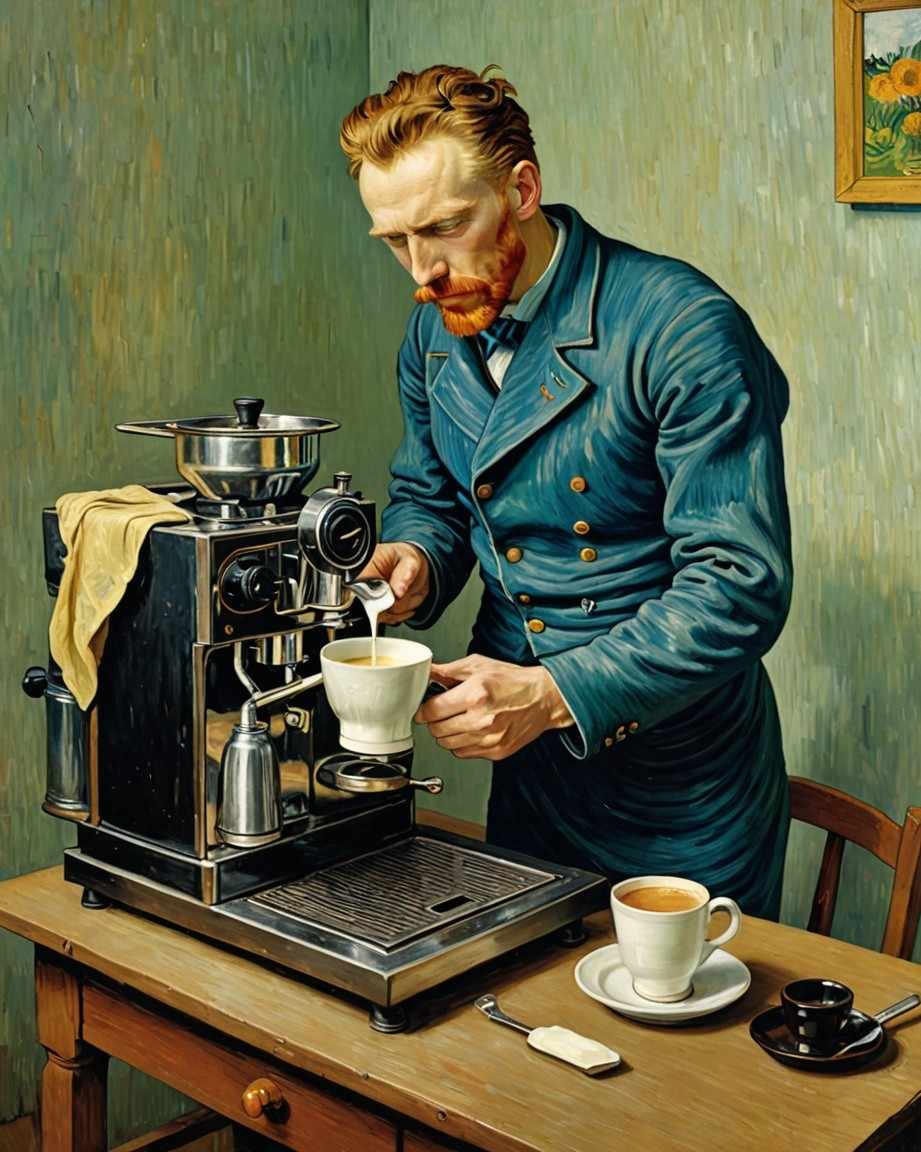
It's fascinating how coffee shops and baristas excel at crafting stunning and elaborate designs with steamed milk and espresso. Mastering latte art requires plenty of technical skill and creativity. Start each day with your caffeine masterpiece!
Choosing the Perfect Espresso Machine
When buying an espresso machine consider how much you can spend, how often you'll use it, the kind of coffee you prefer, your expertise level, and how much space you have on your kitchen counter.
Read online reviews and before making a purchase go through all the specifications the machine offers.
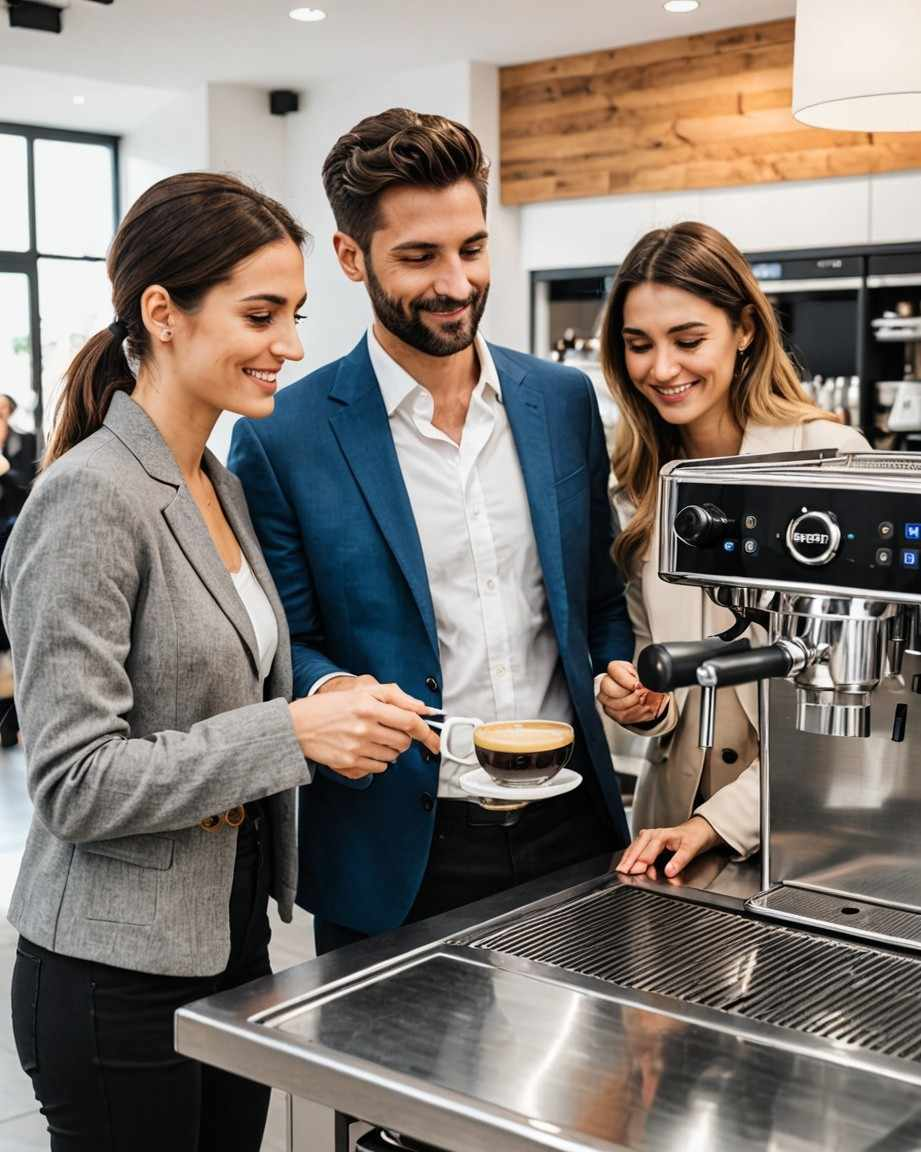
Once you've gained expert knowledge, you'll know which type of espresso machine is most suitable. Built-in grinders, water reservoir size, milk frothing capabilities, and ease of cleaning are important things to look at.
-
Built-in Grinders -These are a convenient feature that allows you to grind your beans fresh for each shot. This guarantees that your espresso will have its wonderful taste and texture.
-
Water Tank Size - A larger tank means fewer refills and more convenience. When choosing an espresso machine, it's important to consider the capacity of the tank especially if you intend to prepare drinks in one go.
-
Milk Frothing Capabilities - If you enjoy milk-based espresso drinks, look for a machine with a powerful steam wand that can effectively froth and steam milk to a smooth and luxurious texture.
-
Ease of Cleaning -A clean espresso machine is essential for optimal performance and longevity. Find a device with parts you can remove and surfaces that are easy to clean for upkeep.
Regular Maintenance and Troubleshooting
-
Always, take care of any issues promptly especially clogged filters and parts not working properly.
-
When you use an espresso machine, remember to clean and check the group heads, filter baskets, and steam wands regularly to ensure they are all in good condition.
-
When cleaning the group head remove the portafilter. Use a cloth or brush to clean it thoroughly and remove any excess grounds or residue left behind.
-
To clean the steam wand, release any leftover milk residue. Then wipe it down with a cloth.
-
Always thoroughly clean the drip tray before inserting it back into the machine.
-
Ensure the hot water spigot is unblocked. Use a toothpick and sponge with warm water to clean the entire hot water spout.
Indulge in Cafe Quality Espresso at Home
By mastering the art of crafting with an at-home espresso machine, you can savor professional-grade coffee from the confines of your home. Select a machine that aligns with your tastes, adhere to the brewing steps, and maintain your device regularly for performance.
Remember, there’s an espresso machine out there for everyone but if you know of a particular at-home espresso machine, that perks you up, let us know in the comments below – ‘Espresso yourself’!



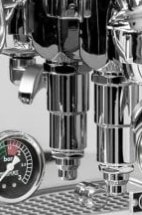
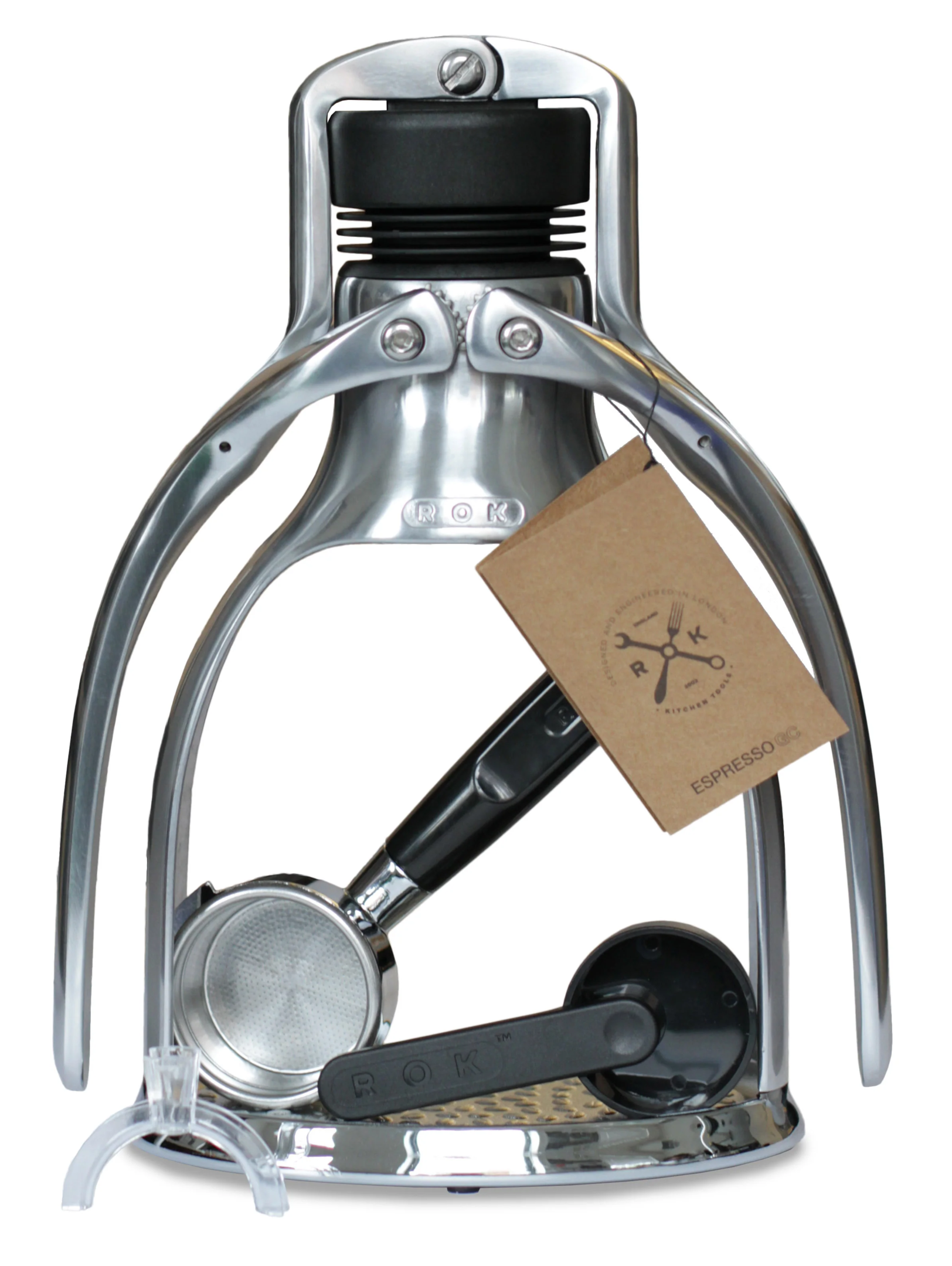
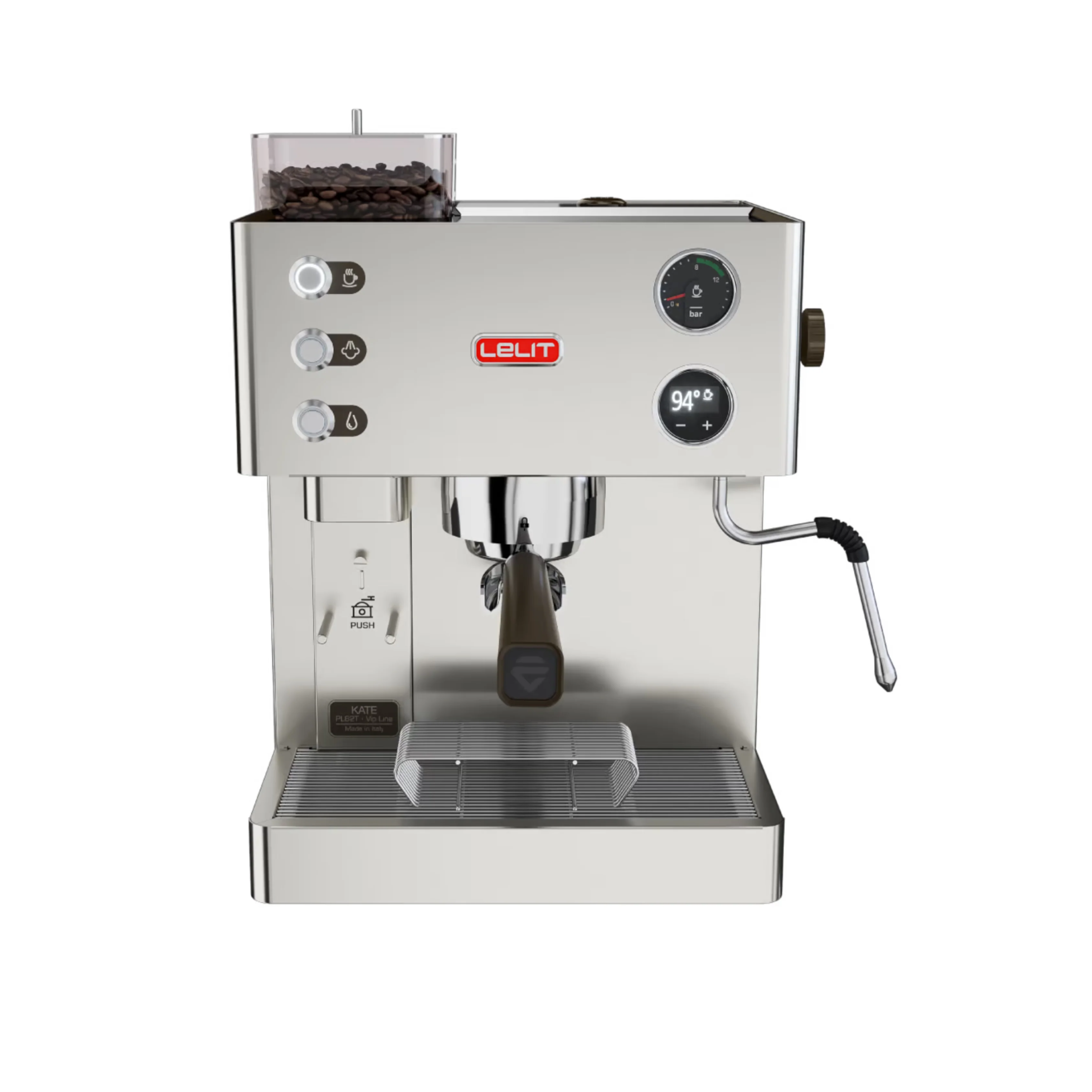
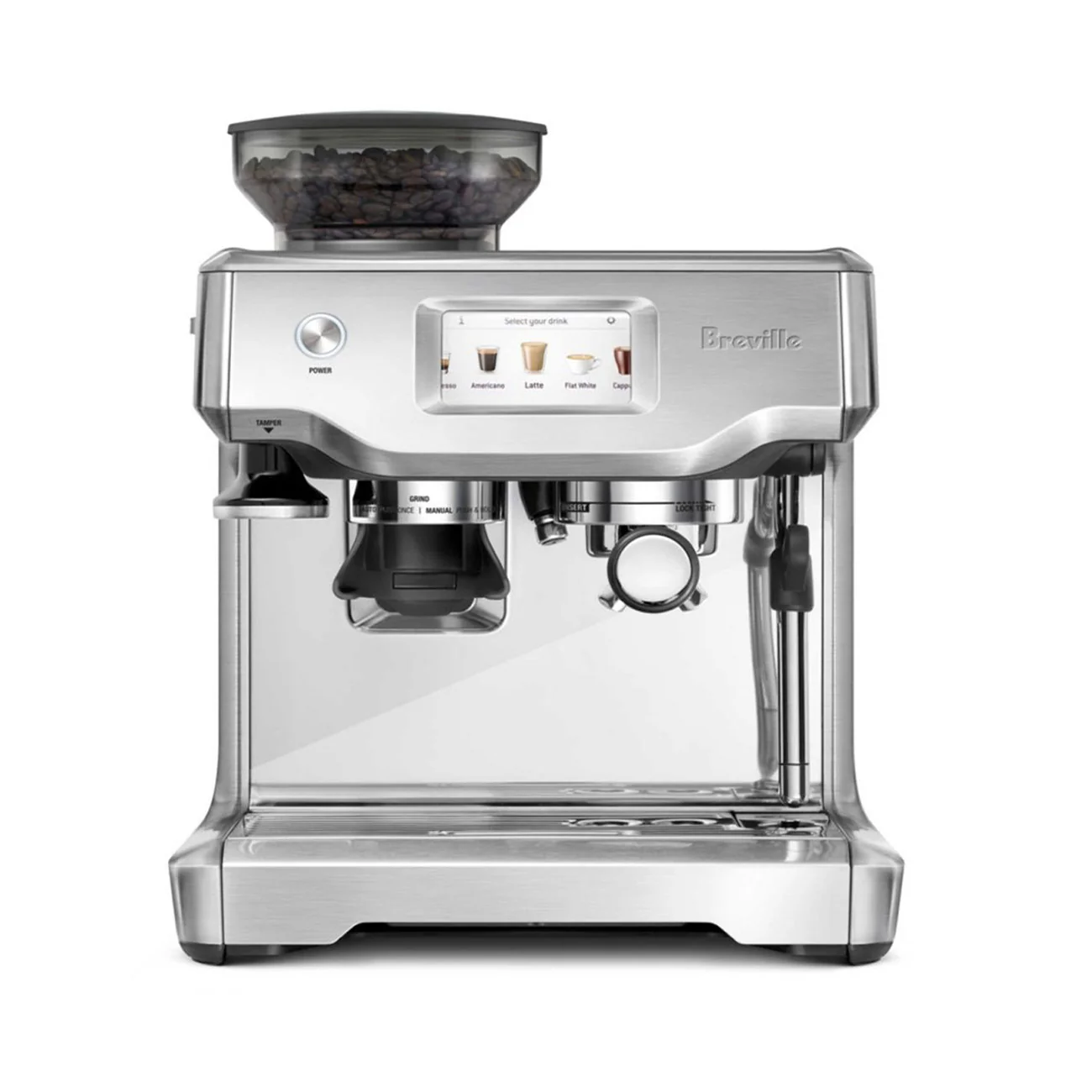
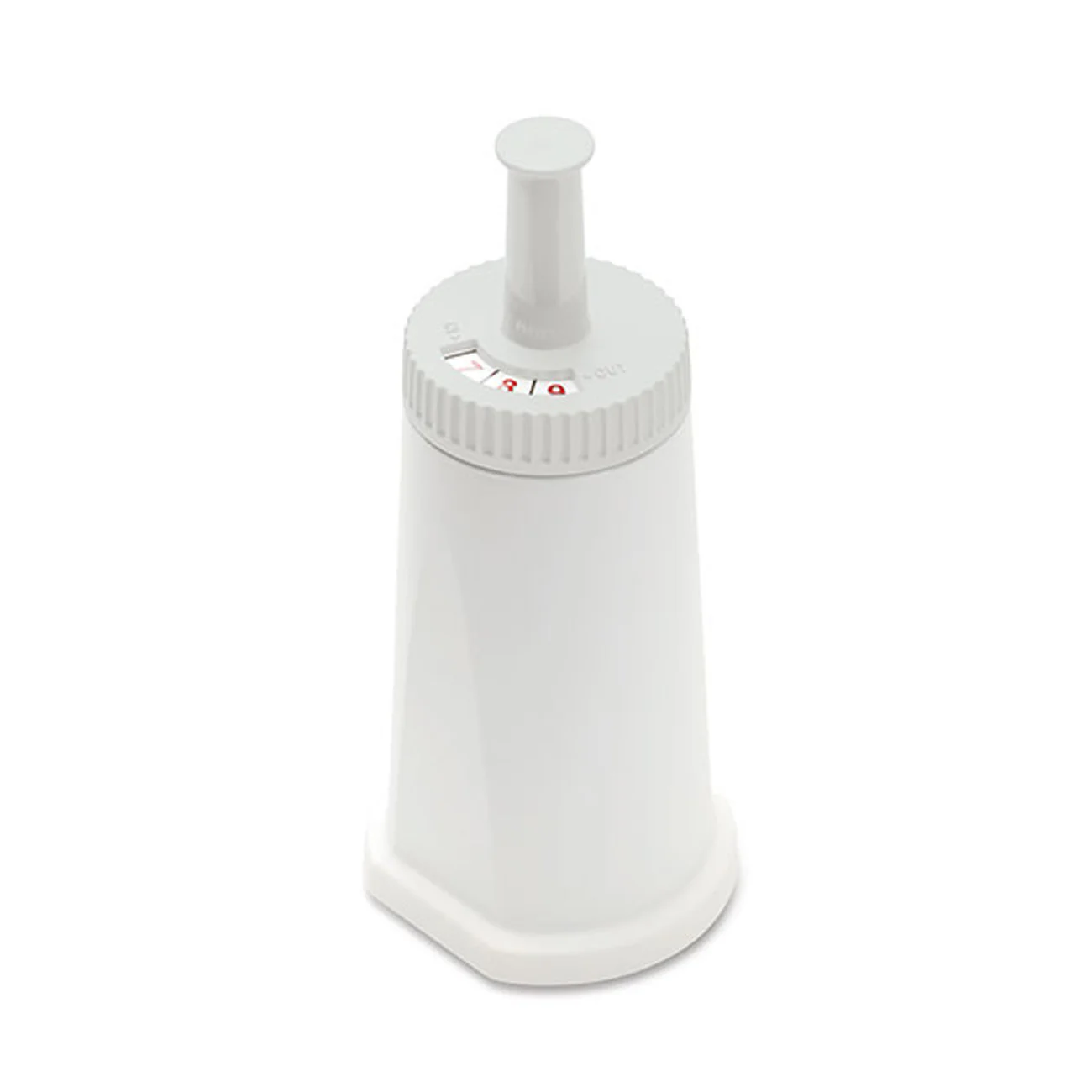
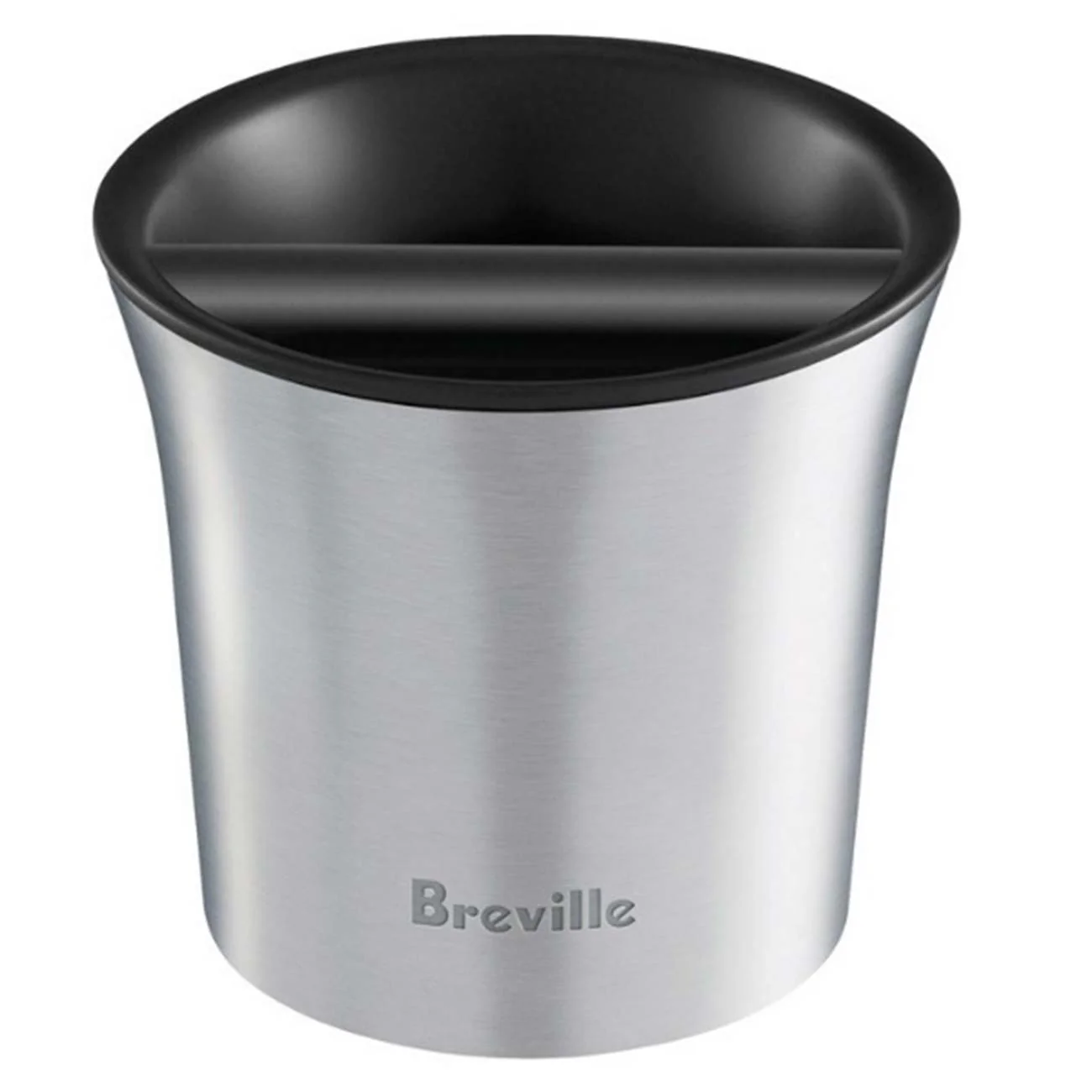

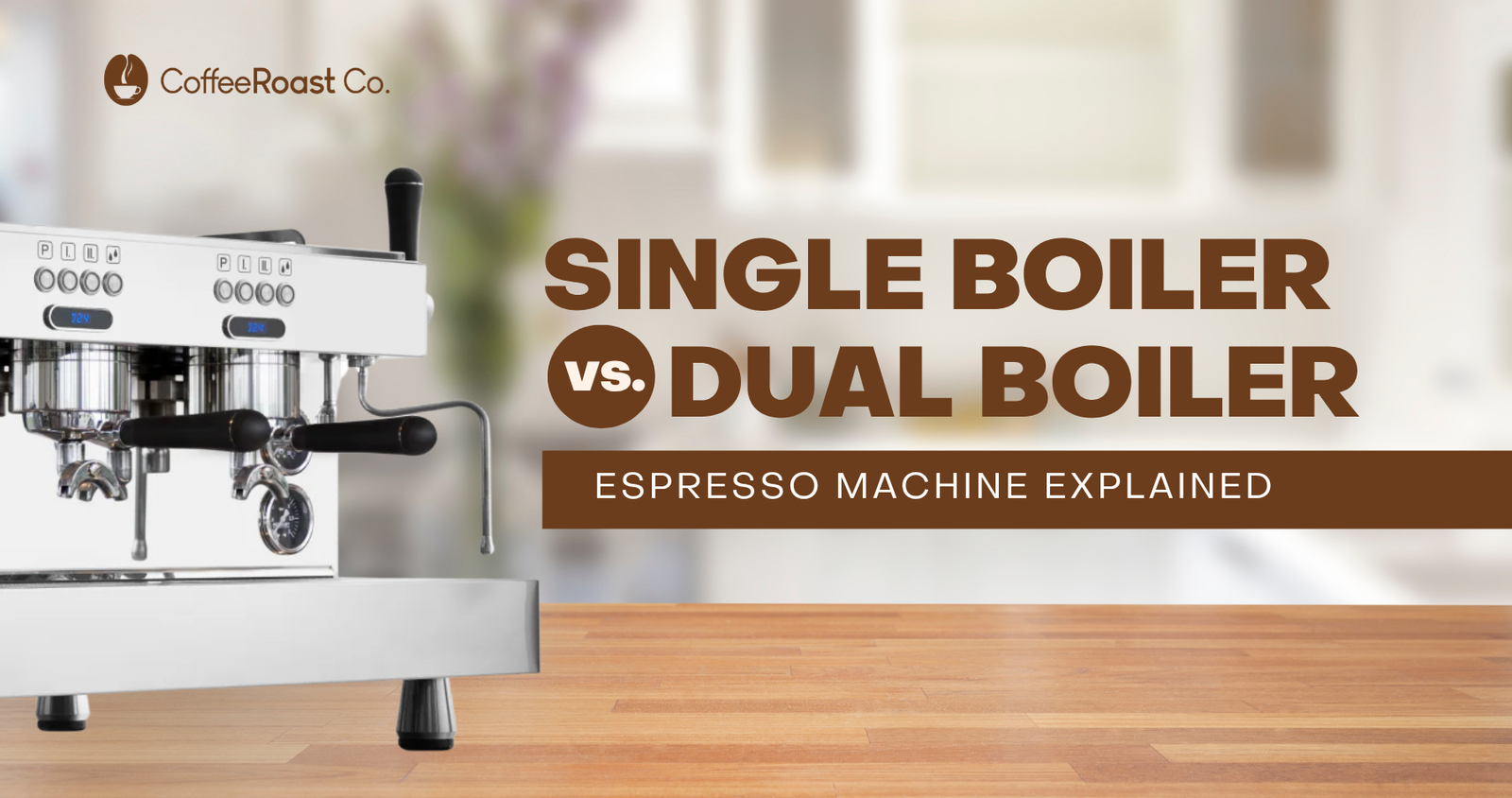

Leave a comment